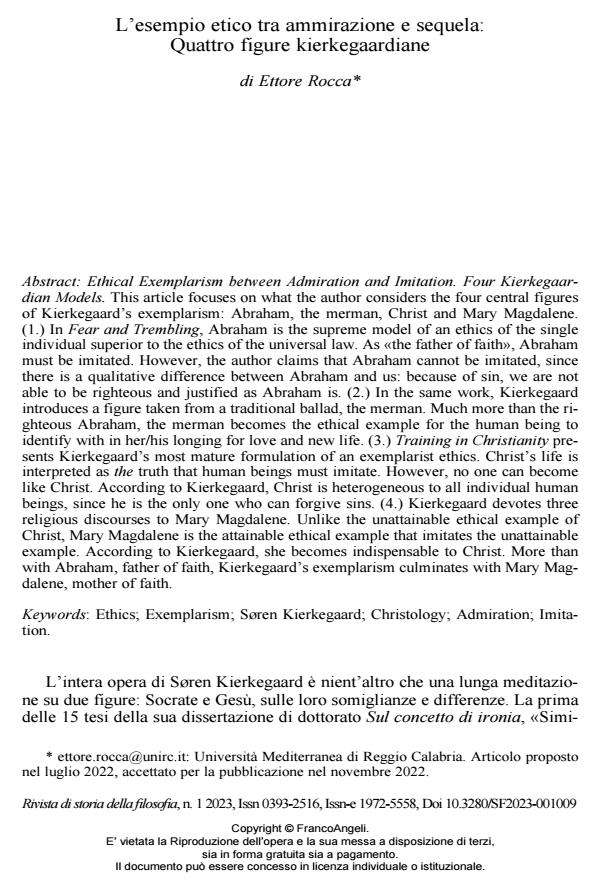L’esempio etico tra ammirazione e sequela: Quattro figure kierkegaardiane
Titolo Rivista RIVISTA DI STORIA DELLA FILOSOFIA
Autori/Curatori Ettore Rocca
Anno di pubblicazione 2023 Fascicolo 2023/1
Lingua Italiano Numero pagine 14 P. 134-147 Dimensione file 209 KB
DOI 10.3280/SF2023-001009
Il DOI è il codice a barre della proprietà intellettuale: per saperne di più
clicca qui
Qui sotto puoi vedere in anteprima la prima pagina di questo articolo.
Se questo articolo ti interessa, lo puoi acquistare (e scaricare in formato pdf) seguendo le facili indicazioni per acquistare il download credit. Acquista Download Credits per scaricare questo Articolo in formato PDF

FrancoAngeli è membro della Publishers International Linking Association, Inc (PILA)associazione indipendente e non profit per facilitare (attraverso i servizi tecnologici implementati da CrossRef.org) l’accesso degli studiosi ai contenuti digitali nelle pubblicazioni professionali e scientifiche
This article focuses on what the author considers the four central figures of Kierkegaard’s exemplarism: Abraham, the merman, Christ and Mary Magdalene. (1.) In Fear and Trembling, Abraham is the supreme model of an ethics of the single individual superior to the ethics of the universal law. As «the father of faith», Abraham must be imitated. However, the author claims that Abraham cannot be imitated, since there is a qualitative difference between Abraham and us: because of sin, we are not able to be righteous and justified as Abraham is. (2.) In the same work, Kierkegaard introduces a figure taken from a traditional ballad, the merman. Much more than the ri- ghteous Abraham, the merman becomes the ethical example for the human being to identify with in her/his longing for love and new life. (3.) Training in Christianity presents Kierkegaard’s most mature formulation of an exemplarist ethics. Christ’s life is interpreted as the truth that human beings must imitate. However, no one can become like Christ. According to Kierkegaard, Christ is heterogeneous to all individual human beings, since he is the only one who can forgive sins. (4.) Kierkegaard devotes three religious discourses to Mary Magdalene. Unlike the unattainable ethical example of Christ, Mary Magdalene is the attainable ethical example that imitates the unattainable example. According to Kierkegaard, she becomes indispensable to Christ. More than with Abraham, father of faith, Kierkegaard’s exemplarism culminates with Mary Magdalene, mother of faith.
Parole chiave:Ethics;; Exemplarism;; Søren Kierkegaard;; Christology;; Admiration; Imitation
Ettore Rocca, L’esempio etico tra ammirazione e sequela: Quattro figure kierkegaardiane in "RIVISTA DI STORIA DELLA FILOSOFIA" 1/2023, pp 134-147, DOI: 10.3280/SF2023-001009